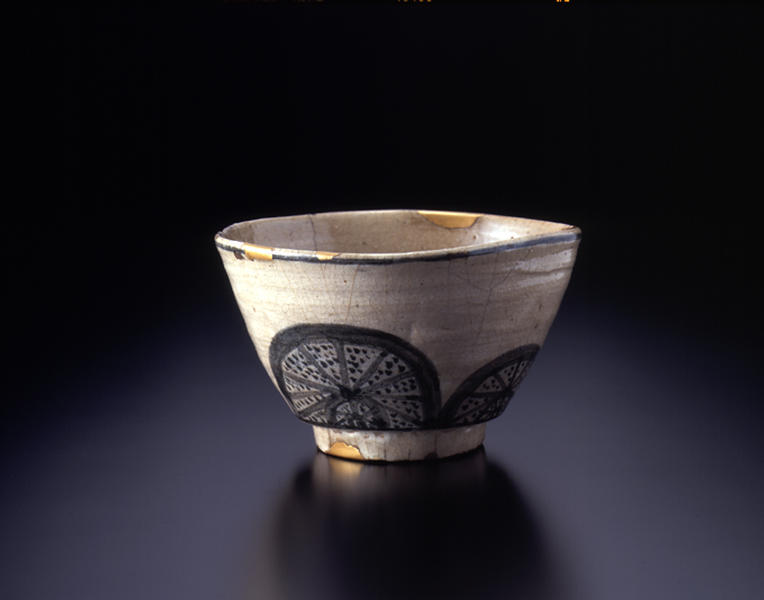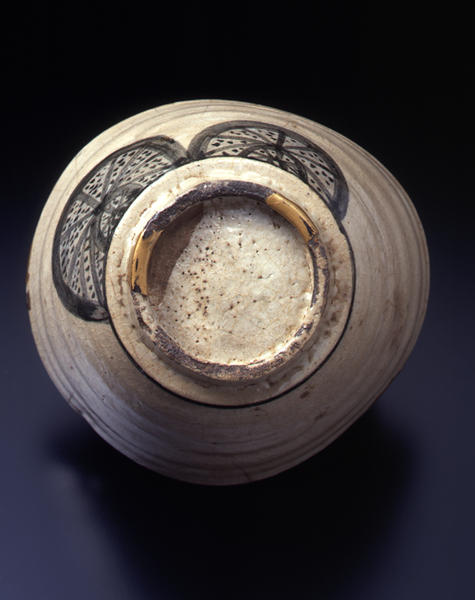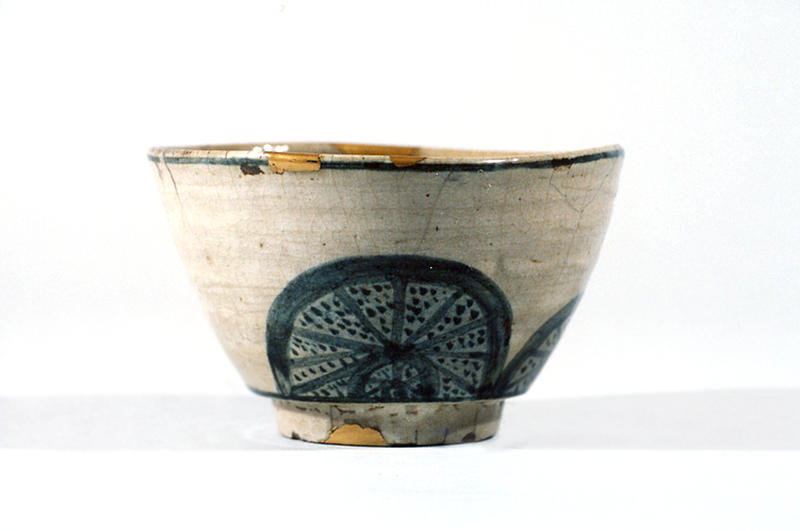瀬戸呉須絵茶碗 銘 淀河
- 江戸時代
- 17c
- 染付施釉陶製
- H-7.7 D-14
- 所蔵
- 土屋宗俊旧蔵
瀬戸焼は愛知県瀬戸市を中心とする焼物の総称で、中国・四国・九州地方で陶磁器が唐津物と呼称されるのに対し、畿内以東で瀬戸物と言われるものである。桃山時代に美濃地方(愛知県土岐市)で志野・黄瀬戸・織部等の優れた作品が焼成された時以外は、常に製陶の中心地であった。この茶碗は、簡略な筆致で大小の片輪車文を描き、口辺にも一線を巡らす。片輪車文は、平安時代に乾燥を防ぐために車輪を流れに浸した情景からとった図案と言われるが、後世、浮世のままならぬ状況を水面をくるくると回る水車にたとえたりした。銘「淀河」は、そうした意味合いを込めて詠まれたものかも知れない。そこには人生訓としてこの文様を見立てた数寄者の眼差しが感じられる。江戸時代前期の武士、土屋宗俊の所持であったという。
Catalogue Entry
Seto ware is the general name given to wares produced around the city of Seto in Aichi prefecture. In the past, those ceramics produced in Japan's western regions, including Kyushu, Shi‐koku and Chugoku, were generally referred to as Karatsu wares. Similarly, those produced east of the Kyoto region were known generally as Seto wares. Since the Azuchi‐momoyama period when the Mino region (present‐day Toki city, Aichi prefecture) produced superb works in the Shino, Ki‐seto and Oribe styles, the Seto area has been one of the central ceramic production regions of Japan. This tea bowl is decorated with simply drawn small and large half‐cartwheels, and the mouth area is circled by a single line. The half‐cartwheel motif traces back to the Heian period, when cart wheels used on oxen carts were submerged in rivers to prevent them from drying out and cracking. While this actual source can be cited, in later periods the motif linked waterwheels and their incessant movement to the every changing nature of this ephemeral world. The name of this bowl, Yodogawa, may have come from a poem expressing just such a sentiment. In this naming of the bowl we can sense the gaze of those cultured individuals who created images and puns around the rules and nature of our human lives. This bowl is said to have been in the collection of the early Edo period samurai, Tsuchiya Soshun.


